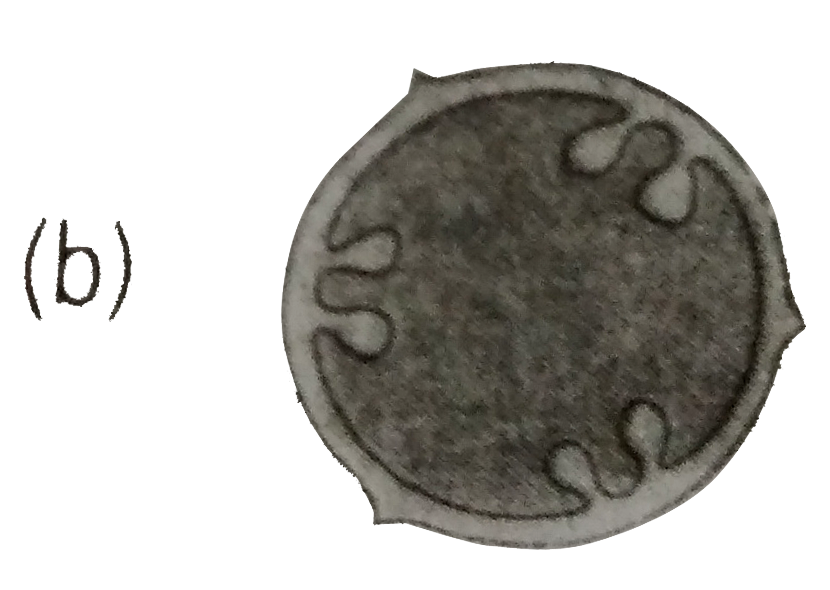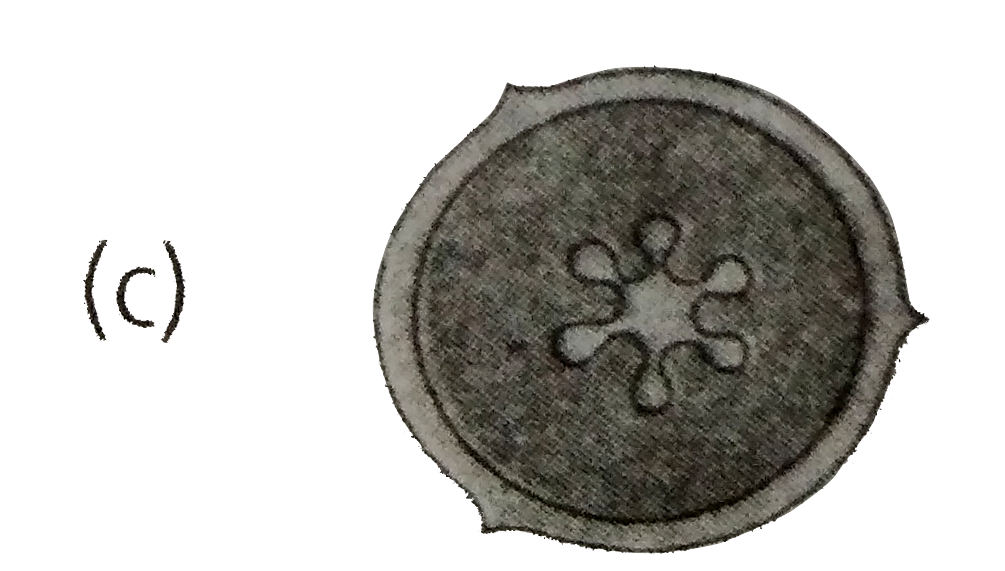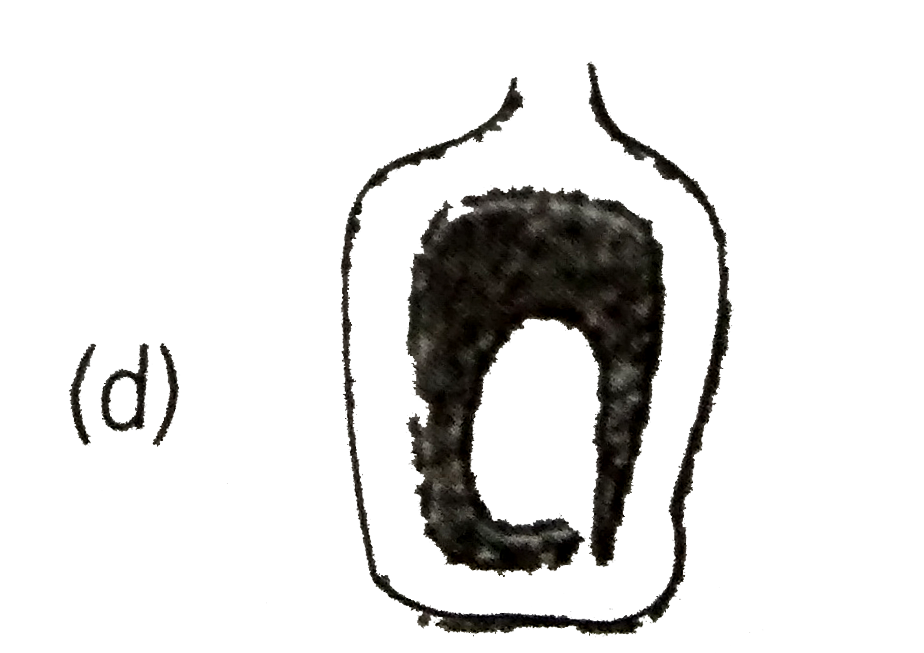The pistil in Hibiscus is
Monocarpellary
Tricarpellary, apocarpous
Multicarpellary, apocarpous
Pentacarpellary, syncarpous
The correct Answer is:4
To answer the question about the pistil in Hibiscus, we can break down the information as follows:
1. Understanding the Pistil:
- The pistil is the female reproductive part of a flower. It consists of three main components: the ovary, the style, and the stigma.
- The ovary contains ovules, which develop into seeds after fertilization. The stigma is the part that receives pollen, and the style is the tube that connects the stigma to the ovary.
2. Identifying the Type of Pistil in Hibiscus:
- In Hibiscus, the pistil is described as "pentacarpillary." This term indicates that the pistil is made up of five carpels.
- Each carpel is a basic unit of the pistil and can be thought of as a modified leaf that encloses the ovules.
3. Understanding Syncarpous vs. Apocarpous:
- The term "syncarpous" refers to a condition where the carpels are fused together. In contrast, "apocarpous" means that the carpels are separate and not fused.
- In Hibiscus, the pistil is syncarpous, meaning the five carpels are fused to form a single structure.
4. Evaluating the Options:
- The options provided include:
- Monocarpillary (one carpel) - Incorrect
- Tricarpillary (three carpels) - Incorrect
- Multi-carpillary (multiple carpels) - Incorrect but too vague for specificity
- Pentacarpillary (five carpels) - Correct
- Since Hibiscus has five fused carpels, the correct answer is "pentacarpillary and syncarpous."
Final Answer:
The pistil in Hibiscus is pentacarpillary and syncarpous.
---
- The pistil is the female reproductive part of a flower. It consists of three main components: the ovary, the style, and the stigma.
- The ovary contains ovules, which develop into seeds after fertilization. The stigma is the part that receives pollen, and the style is the tube that connects the stigma to the ovary.
- In Hibiscus, the pistil is described as "pentacarpillary." This term indicates that the pistil is made up of five carpels.
- Each carpel is a basic unit of the pistil and can be thought of as a modified leaf that encloses the ovules.
- The term "syncarpous" refers to a condition where the carpels are fused together. In contrast, "apocarpous" means that the carpels are separate and not fused.
- In Hibiscus, the pistil is syncarpous, meaning the five carpels are fused to form a single structure.
- The options provided include:
- Monocarpillary (one carpel) - Incorrect
- Tricarpillary (three carpels) - Incorrect
- Multi-carpillary (multiple carpels) - Incorrect but too vague for specificity
- Pentacarpillary (five carpels) - Correct
- Since Hibiscus has five fused carpels, the correct answer is "pentacarpillary and syncarpous."
The pistil in Hibiscus is pentacarpillary and syncarpous.
Topper's Solved these Questions
- SEXUAL REPRODUCTION IN FLOWERING PLANTSBOOK - VMC MODULES ENGLISHCHAPTER - SEXUAL REPRODUCTION IN FLOWERING PLANTSEXERCISE - ENABLE
50 Videos
- SEXUAL REPRODUCTION IN FLOWERING PLANTSBOOK - VMC MODULES ENGLISHCHAPTER - SEXUAL REPRODUCTION IN FLOWERING PLANTSEXERCISE - EFFICIENT
50 Videos
- REPRODUCTIVE HEALTHBOOK - VMC MODULES ENGLISHCHAPTER - REPRODUCTIVE HEALTHEXERCISE - Chapter Exercise-C
10 Videos
- STRATEGIES FOR ENHANCEMENT IN FOOD PRODUCTIONBOOK - VMC MODULES ENGLISHCHAPTER - STRATEGIES FOR ENHANCEMENT IN FOOD PRODUCTIONEXERCISE - IMPECCABLE
30 Videos
Similar Questions
Knowledge Check
Which of the following figures represents a typical placentation as seen in Hibiscus rosa sinensis (China rose)?
A B
B C
C D
D
Which of these properties are seen in Hibiscus rosa - sinensis ?
(i) Leaves with alternate phyllotaxy
(ii) Polycarpellary syncarpous inferior ovary
(iii) Twisted aestivation in petals
(iv) Basal placentation of ovules
View SolutionPollne pistil interactin is
View SolutionWhen pistillate and besexual flowers develop on defferent plants. The condition is
View SolutionGo through the following matches regarding the flower
(i) Mustard - Epigynous
(ii) Plum - Perigynous
(iii) Hibiscus - Epigynous
(iv) Peach - Perigynous
Which of these are correct ?
View SolutionThe gynoecium consists of many free pistils in flowers of
View SolutionThe events in pollen- pistil interaction includes all, except
View SolutionThe statements given below descibe certain features that are observed in the pistil of flowers.
(i) Pistil may have many carpels.
(ii) Each carpel may have more than one ovule.
(iii) Each carpel has only one ovule.
(iv) Pistil have only one carpel.
View Solution
